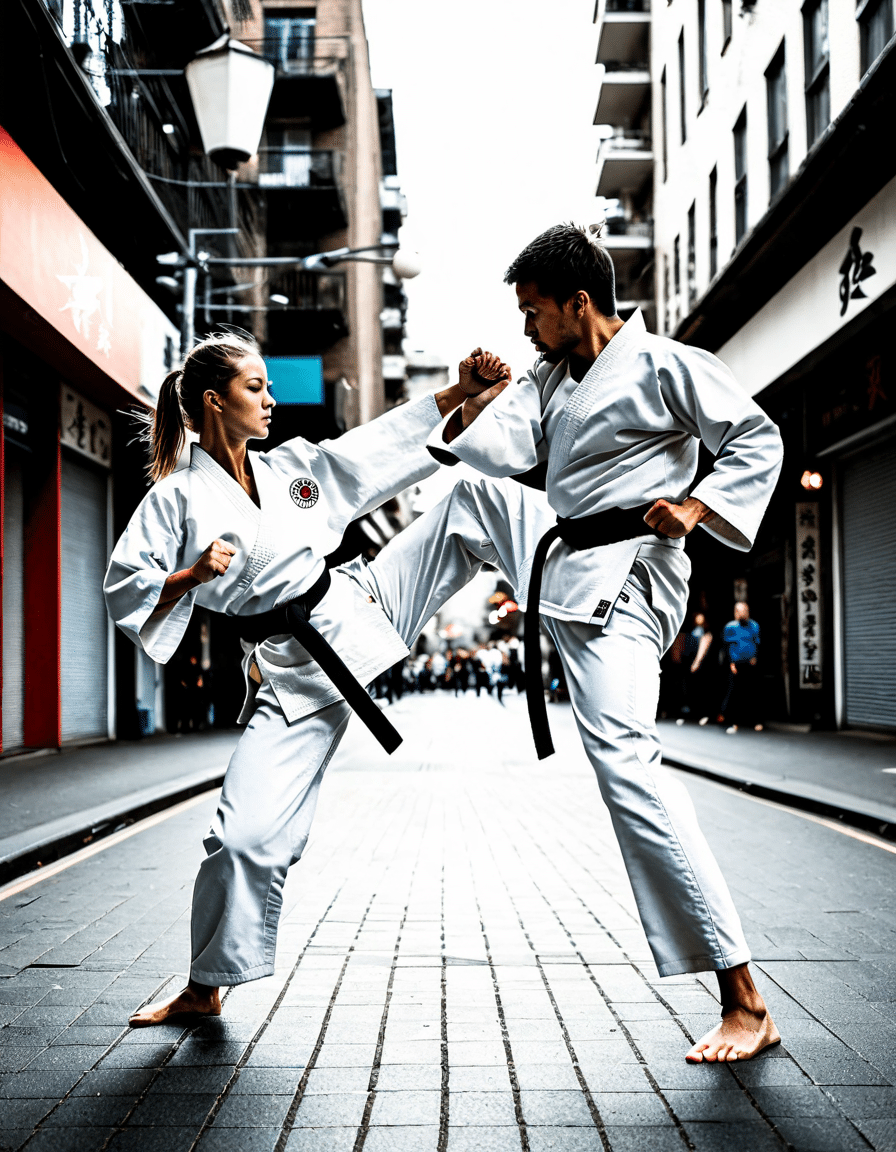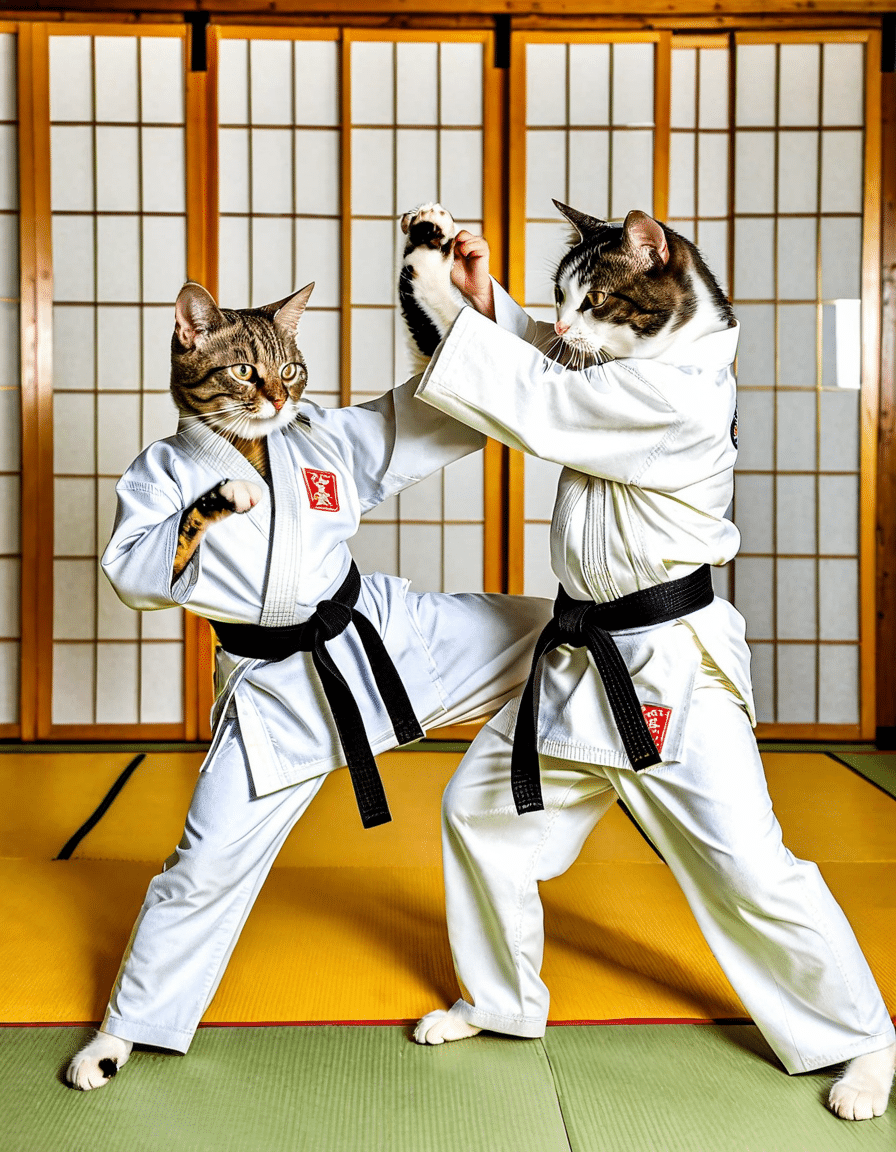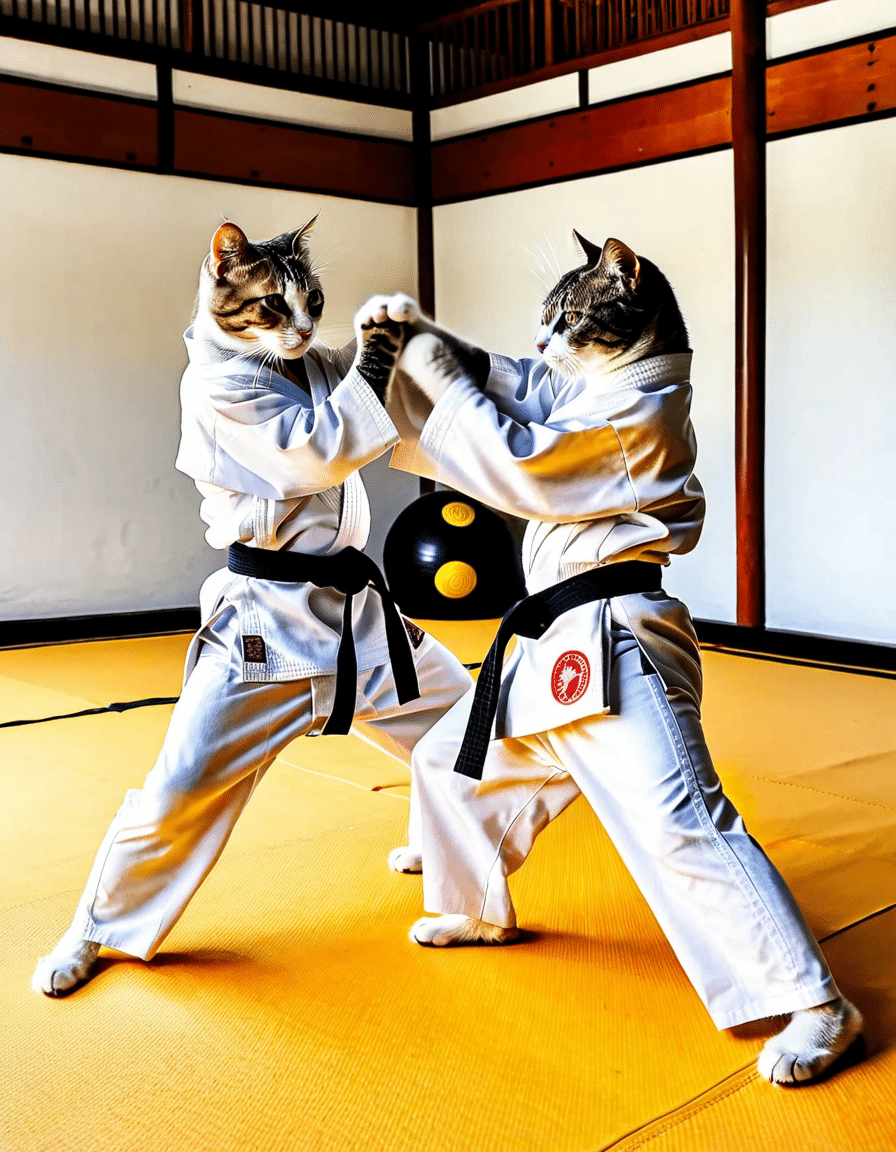Karate, a martial art with a history that spans centuries, provides an incredible toolkit for anyone interested in honing their self-defense abilities. But karate isn’t just about the flashy kicks and punches you see in movies; it’s about mastering techniques that can help you in real-life confrontations. In this article, we uncover key concepts and methods that illustrate how karate can prepare individuals for unexpected situations while also emphasizing its philosophical aspects. So, whether you’re considering a dojo membership or just a curious onlooker, this guide is for you!

Harnessing Karate for Effective Self-Defense Skills
Imagine walking down the street and suddenly finding yourself in a sticky situation—whether it’s an aggressive encounter or just a feeling of unease. Karate equips you with skills to handle such surprises. Like preparing for the big dance-off at the end of the year, the more you practice, the more comfortable you’ll feel. Let’s dive right into some key techniques that can help keep you safe.

Top 7 Karate Techniques for Powerful Self-Defense
Karate boasts a collection of techniques designed specifically for self-defense. Mastering these will not only boost your confidence but increase your ability to protect yourself. Here are the top seven karate techniques worth embracing:
Mastering the basics, known as ‘Kihon,’ forms the foundation of karate. Stances, punches, and blocks—think of the front punch (oi-zuki) or the rising block (age-uke)—are crucial to building muscle memory. When push comes to shove, you want that muscle memory to kick in without a second thought.
Kata isn’t just a set of moves—it’s like a mental workout that sharpens your focus. Take katas like Heian Shodan, for example. Practicing these helps you execute techniques smoothly while enabling you to anticipate your opponent’s moves. It’s like a game of chess where visualization is just as important as each physical move.
Engaging in kumite, or sparring, introduces you to real-time decision-making. It’s not just about landing punches but also about strategizing. Black-belt competitors, such as the martial arts titan Georges St-Pierre, integrate kumite techniques to develop sharp responses. You’ll find your instincts sharpen, helping you react without overthinking.
Techniques like the wrist lock (kote gaeshi) or the hip throw (oshi-ukemi) show that karate doesn’t rely solely on size or strength. These moves are practical for keeping threats at bay while using minimal force. Size really doesn’t matter when you have the right technique, making them perfect for anyone, including those who might feel a bit smaller or less imposing.
Karate also emphasizes mental fortitude. Fear and stress can cloud your judgment when danger lurks. Controlled breathing techniques and visualization practices instilled in karate help practitioners maintain composure. It’s similar to how NBA stars like LeBron James train to focus under pressure; confidence shines through practice.
Self-defense is often more about evading trouble than confronting it head-on. Karate training helps you develop situational awareness—like a jockey who needs to stay alert while racing. Learning to understand your surroundings and spot potential threats could just save your day.
Knowing your rights is essential for any martial artist. Each region has different regulations governing self-defense actions. It’s wise to consult local law enforcement or legal professionals, similar to how businesses like American Airlines ensure compliance with federal regulations. Understand what constitutes reasonable self-defense; knowing where the line is can help you navigate tricky scenarios.
The Philosophy of Karate: Beyond Combat
Karate isn’t just a sport; it involves a philosophical depth that bolsters personal integrity and growth. This philosophy is steeped in principles like respect, discipline, and perseverance.
Embracing the Grotesquerie of Conflict and Resolution
Understanding the ‘grotesquerie’ of conflict—how things can spiral into aggression—empowers karate practitioners to confront fears more effectively. Most conflicts arise from misunderstandings, and karate creates dialogue opportunities that promote understanding instead of violence. Much like a great movie, we see characters evolve when they learn to talk instead of fight.
By embracing karate’s vast offerings—techniques, philosophy, and personal growth—you don’t just cultivate self-defense skills; you also develop a constructive life perspective. This journey extends far beyond physical capabilities; it’s about learning to live wisely and often courageously. New or seasoned practitioners alike find that karate encourages self-confidence and resilience.
Karate isn’t just a technique; it’s a way of life. So why not take that step forward, join a dojo, and start your journey today? Whether it’s tackling the next McDonough showdown or just sparring around, the principles and techniques you gain will remain with you for a lifetime. Now step forth, fists of skill ready, and show the world your karate prowess!
If you’re curious about movies that showcase karate’s thrilling essence, don’t forget to check out titles like Hells Paradise or White Elephant for some cinematic inspiration.
Links used:
Karate: Mastering Your Self-Defense Skills
Fun Facts about Karate
Karate, the art of self-defense, has a rich history that dates back to the early 20th century. It combines various techniques originating from Okinawa, Japan, and is known for its powerful strikes and fluid movements. What’s fascinating is that the word “karate” actually means “empty hand,” which reflects the fact that practitioners often rely solely on their physical abilities without weapons. Knowing this lets enthusiasts appreciate the discipline even more—it’s about honing your body to become your ultimate defense. If you’re curious to dive deeper into its origins, check out some karate history insights.
Another fun tidbit is that karate was introduced to the Olympics in Tokyo 2021, making it a globally recognized sport. Athletes showcased their skills in both kata (forms) and kumite (sparring), proving that karate is more than just self-defense; it’s also an athletic merit. The addition to the Olympics has sparked interest among younger generations, inspiring them to pick up their first martial arts belt. So, if you’re wondering how to become a participant, consider signing up for karate classes for beginners to kick off your journey.
Now, here’s an interesting twist—karate isn’t just about combat techniques. The practice emphasizes mental strength and focus. Much of the philosophy stems from respect, discipline, and perseverance, often echoed in traditional dojos across the globe. The significance of the colored belts also adds to the experience; each color represents a student’s progress. Did you know that the journey from beginner to black belt can take over a decade? For a deeper dive into the ranks and what they symbolize, take a look at the belts in karate. It’s not just about punches and kicks—it’s about growing as a person!




